Key takeaways
- Social media can be a powerful tool for learning when used intentionally, encouraging critical thinking and engagement.
- Activist teacher resources foster community and authenticity, promoting social justice education that resonates on a personal level.
- Effective use of social media for activism education involves careful curation, active participation, and setting clear learning goals.
- Utilizing diverse platforms like Twitter and Facebook groups enhances collaboration and creates supportive learning environments for educators and students alike.

Understanding social media for learning
Social media can be more than just a place to catch up with friends or scroll mindlessly; it’s a dynamic space where learning happens in real time. I’ve often found that the most unexpected lessons come from quick exchanges on Twitter or insightful posts on Instagram, proving that knowledge isn’t confined to textbooks or classrooms anymore. Isn’t it fascinating how a simple tweet can spark a whole new way of thinking?
When I first started using social media intentionally for learning, it felt overwhelming—there’s so much noise and distraction. But over time, I realized it’s about curating your feed carefully and engaging actively, not passively. This shift changed how I approach information, turning social media into a powerful tool for discovery rather than a source of overwhelm.
Understanding social media for learning also means recognizing its dual nature: it’s a platform with incredible access but also misinformation and bias. I’ve learned to question, verify, and reflect constantly, which has taught me to become a more critical thinker, not just a consumer of content. How often do we pause to consider the source before accepting what we read online?
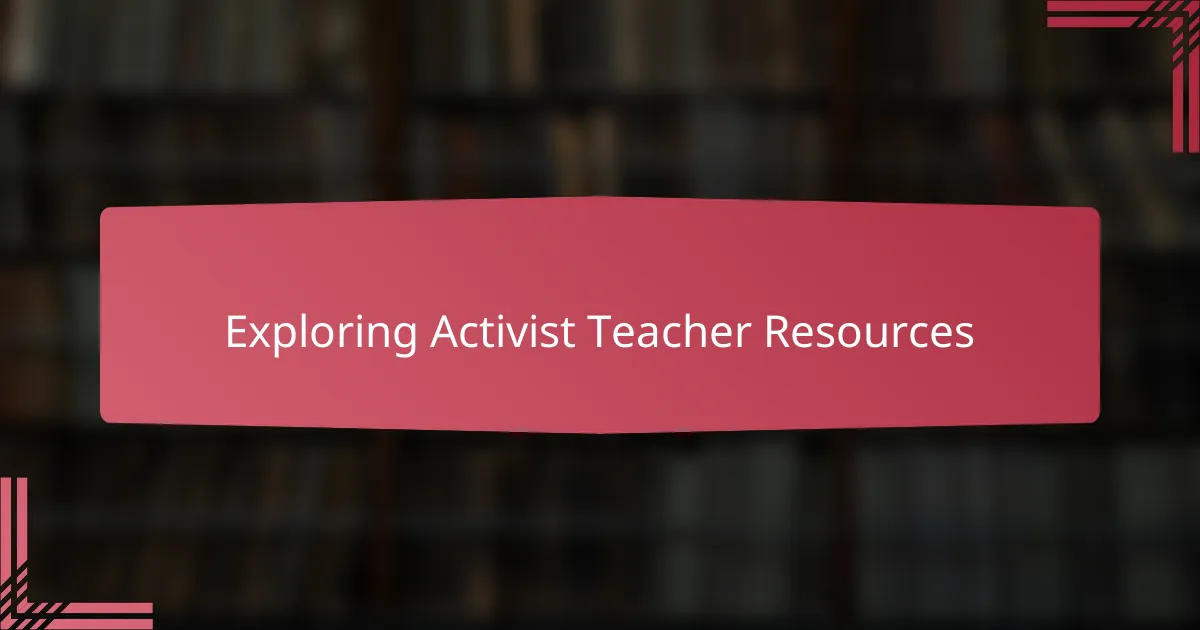
Exploring activist teacher resources
Diving into activist teacher resources feels like uncovering a treasure trove of knowledge and inspiration. I remember feeling both energized and challenged the first time I explored lesson plans that centered equity and social justice—it was like discovering a community that shared my passion and concerns. Have you ever come across a resource that didn’t just teach content but also stirred something deeper inside you?
What excites me most about these resources is their authenticity. Many come straight from educators who are knee-deep in activism, sharing real stories and strategies that reflect their lived experiences. It made me realize that teaching with a purpose isn’t just about curriculum, but about connecting with students on a human level.
At times, navigating these materials can feel overwhelming—so many voices, so many perspectives—but isn’t that the point? To grapple with complexity and come out more informed and empathetic? That’s why I think exploring activist teacher resources is not just an educational endeavor; it’s a personal journey toward becoming a more thoughtful and engaged teacher.
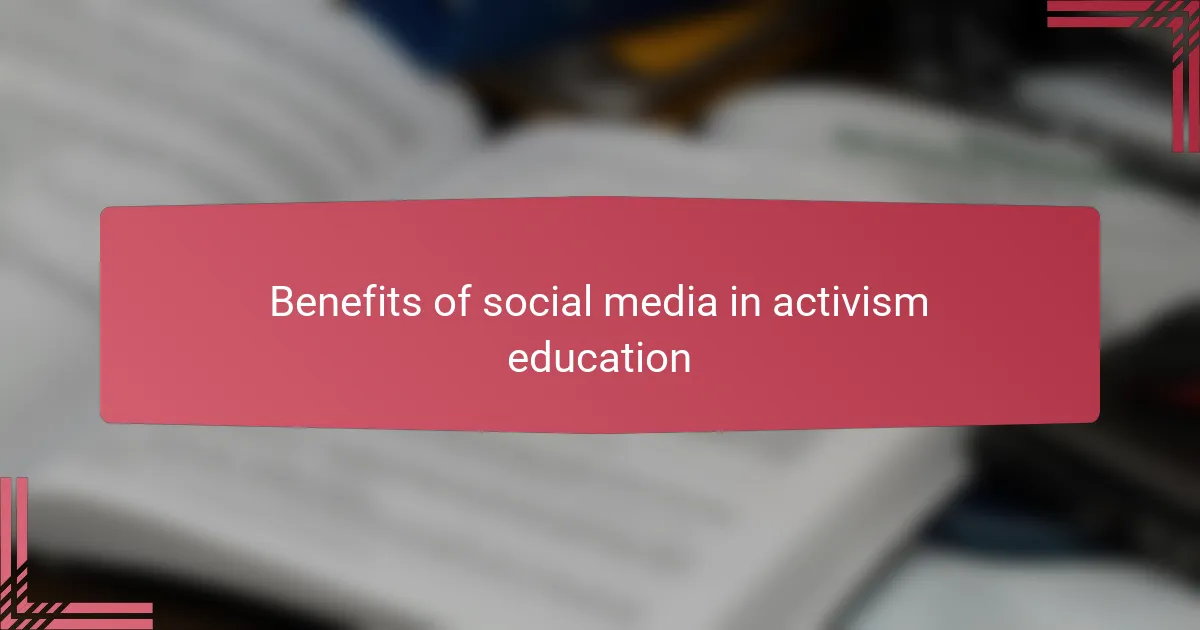
Benefits of social media in activism education
One of the biggest benefits I’ve noticed is how social media breaks down barriers between learners and movements. Suddenly, an activist halfway around the world is just a message or comment away, making education feel alive and immediate. Haven’t you found yourself inspired by how quickly ideas and calls to action spread online?
Social media also turns learning into a participatory experience rather than a passive one. When I join conversations or share articles, I’m not just absorbing information—I’m challenging my views and connecting with others who push me to think deeper. This interactive aspect makes activism education more vibrant and personal than traditional methods ever did.
What really stands out to me is the diversity of voices available through social media. It’s like having a classroom open 24/7 with perspectives from communities often left out of mainstream education. This richness has reshaped how I approach teaching activism, reminding me that every story matters and that learning is as much about listening as it is about speaking.
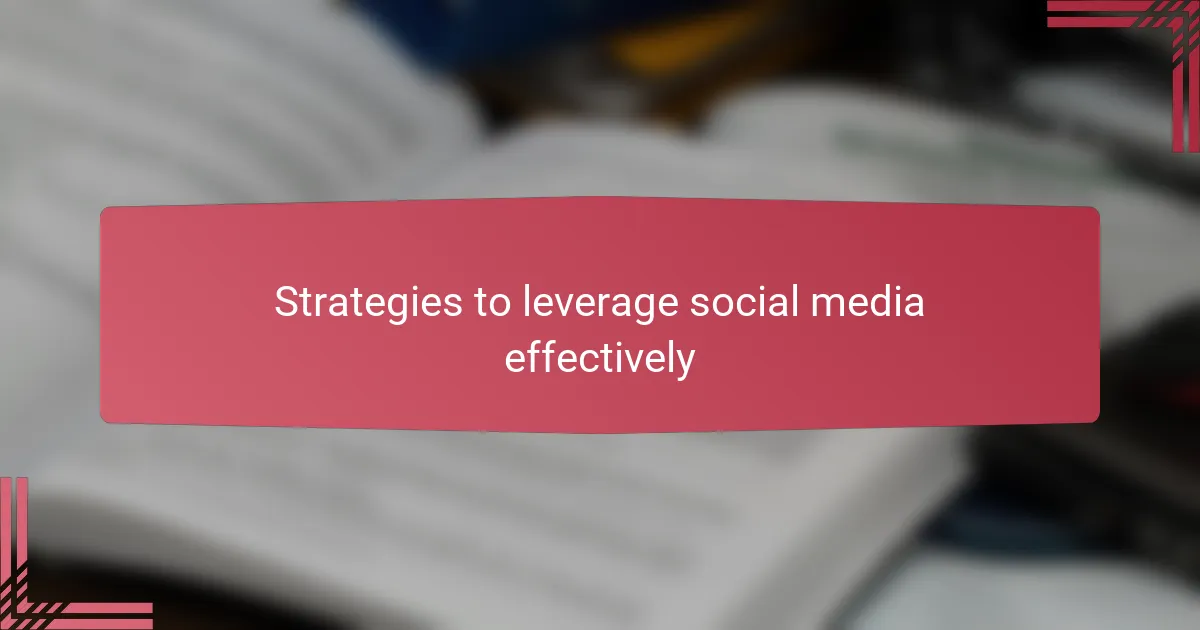
Strategies to leverage social media effectively
When I think about strategies to leverage social media effectively, the first thing that comes to mind is intentional curation. Early on, I realized that following a handful of trusted voices and groups made all the difference. Have you ever spent hours scrolling only to feel more confused? That’s what happens without a clear focus—curating your feed helps filter out noise and sharpens your learning.
Another approach that has worked well for me is active participation. I don’t just read posts or watch videos; I comment, ask questions, and share resources that resonate with me. This two-way engagement transforms social media from a passive scroll into a meaningful dialogue. Have you noticed how your understanding deepens when you discuss ideas with others online?
Finally, setting boundaries is something I’ve learned to prioritize. Social media’s constant flow can be draining if you’re not careful. I schedule specific times for learning and step away when it feels overwhelming. How can we expect to absorb and reflect on new information if we’re always distracted? Finding this balance has been key to sustaining my social media use as a tool for growth.
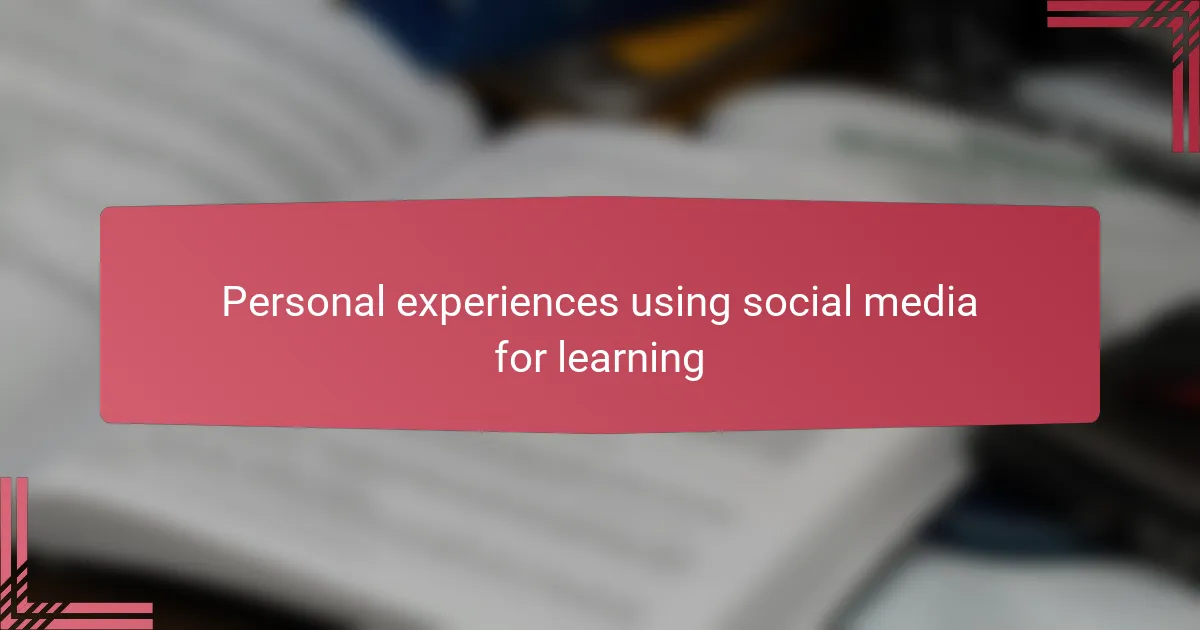
Personal experiences using social media for learning
I still remember the first time I stumbled upon a Facebook group dedicated to social justice education. At first, I was a bit hesitant—would this really be a place to learn, or just another noisy forum? But soon enough, the thoughtful discussions and shared resources made me feel like I’d found a virtual community that challenged and expanded my understanding in ways I hadn’t expected.
There was a moment when a single Instagram post about anti-racist teaching strategies completely shifted my perspective. It was raw, honest, and personal—something textbooks rarely capture. I realized that social media wasn’t just about grabbing quick facts; it was about connecting with educators who shared their vulnerabilities and victories alike, and that kind of learning stuck with me deeply.
Of course, not all experiences have been smooth sailing. I’ve lost hours following threads only to feel mentally drained or doubting what I’d read. Yet, each slowdown pushed me to become more selective and reflective. Have you ever found yourself questioning not just the content, but your own responses to it? For me, that’s where the real growth began.
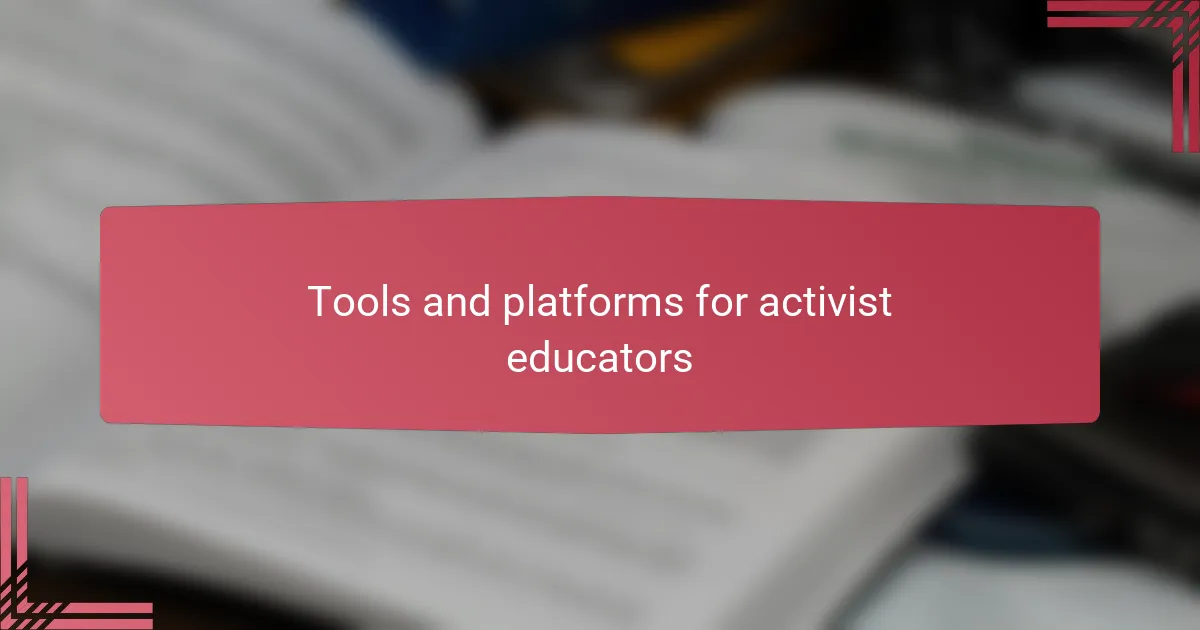
Tools and platforms for activist educators
In my experience, choosing the right tools and platforms can make all the difference for activist educators aiming to build meaningful connections. Platforms like Twitter and Instagram aren’t just social networks; they’re hubs where educators share real-time updates, lesson ideas, and solidarity. Have you ever joined a Twitter chat or follow an activist educator whose posts feel like a conversation rather than just content? That dialogue creates an organic learning community that feels supportive and dynamic.
I’ve also found that dedicated spaces, such as Facebook groups or Slack channels focused on social justice in education, act like digital staff rooms—places to exchange resources and brainstorm strategies without judgment. These platforms offer more than just information; they foster a sense of belonging that’s crucial when tackling tough topics in the classroom. Isn’t it encouraging to know there’s a community ready to back you up, especially when the work feels heavy?
At the same time, leveraging these tools requires discernment. Not every platform suits every educator, and I’ve learned to prioritize those that balance accessibility with purposeful engagement. For me, tools that allow for multimedia sharing—videos, stories, infographics—bring activism into learning in vivid, relatable ways. What types of platforms do you feel most comfortable using to amplify your activist teaching? Choosing thoughtfully helps sustain the momentum that social media can ignite.
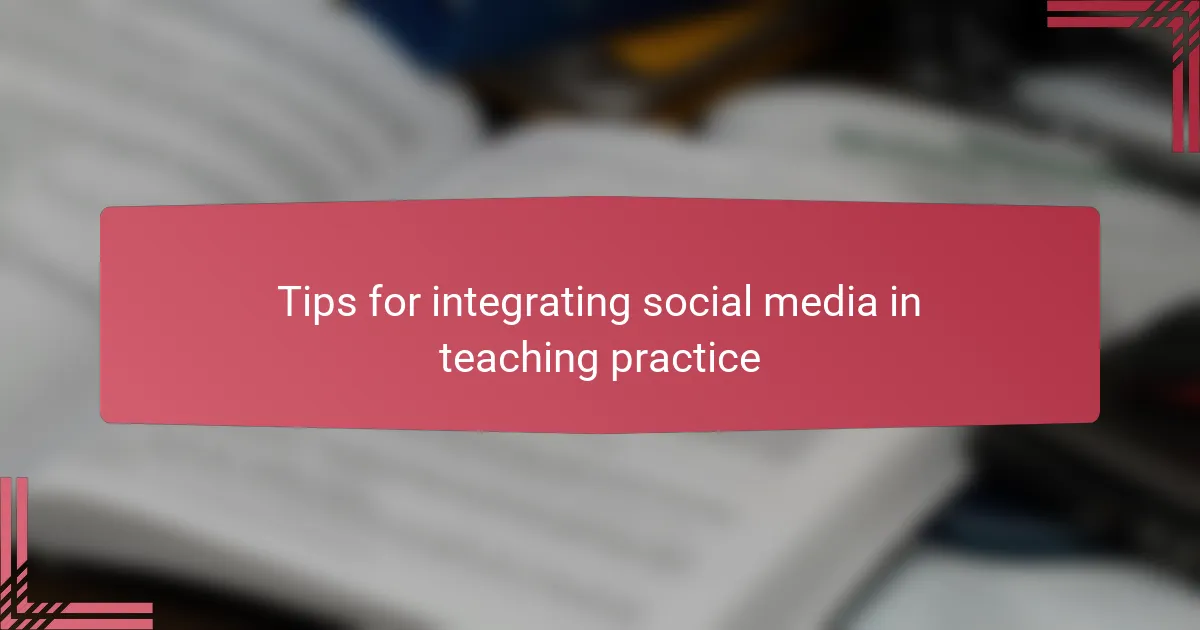
Tips for integrating social media in teaching practice
One tip I’ve found incredibly helpful is to start small—choose just one or two social media platforms to integrate into your teaching. When I tried jumping into all the spaces at once, I quickly felt overwhelmed, like I was drowning in a sea of posts and hashtags. Have you ever felt that too? Narrowing your focus not only makes it manageable but also helps build deeper connections within those communities.
Another strategy that really changed my approach was creating assignments that encourage students to engage critically with social media content. For example, I once asked my class to analyze tweets or posts from activist educators and then reflect on the perspectives they found. It sparked conversations far richer than traditional essays, and students told me they felt more motivated because the material felt relevant to their everyday digital lives.
Finally, I can’t stress enough the importance of setting clear goals for using social media in your lessons. Without a purpose, it’s easy to get sidetracked or lose sight of the learning objectives. When I defined what I wanted my students to gain—whether it was sharpening critical thinking or amplifying marginalized voices—it guided how I introduced and facilitated social media activities. What goals might you set to keep your use of these platforms focused and effective?